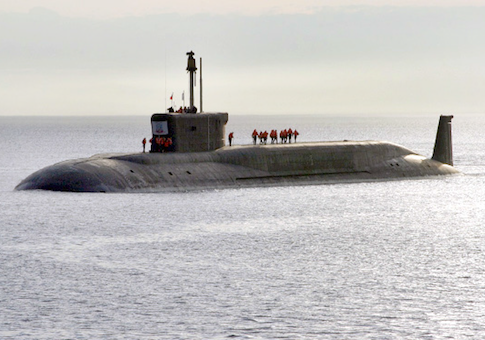Following decades of neglect, Russian naval forces are being modernized with advanced submarines and increasingly lethal ballistic and cruise missiles, according to a report by the Office of Naval Intelligence.
The naval buildup includes three new classes of advanced submarines and several new types of warships that the report warns will "provide a flexible platform for Russia to demonstrate offensive capability, threaten neighbors, project power regionally, and advance President Putin’s stated goal of returning Russia to clear great power status."
Following the collapse of the Soviet Union in 1991, Russia’s navy was reduced in size, and many new weapons systems were canceled while weapons were mothballed.
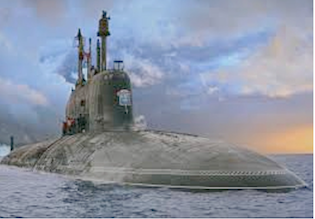
Under Russian leader Vladimir Putin, the navy is getting substantial funding for new weapons systems, with the goal of restoring Soviet-level power by 2020, according to the 68-page December report, "The Russian Navy: A Historic Transition."
The publication seems to be evidence of further U.S. government recognition that Russia, following its military annexation of Ukraine’s Crimea last year, is emerging as an elevated strategic threat.
Russia also is proliferating advanced weapons to other countries. "The quantity and quality of the ships, submarines, and armaments sold will transform the current capabilities of recipient states and, in some cases, potentially enable them to improve the quality of indigenous arms production," the report says.
Recent sales have included Kilo-class submarines to Algeria and Vietnam, Gepard-class frigates to Vietnam, and a modified Kiev-class aircraft carrier to India. Sales of high performance Club missiles—the export version of the Kalibr family of missiles – have been underway for over a decade.
"This proliferation of high grade weapons is one of the most troubling aspects of Russian Federation adventurism worldwide," the report said.
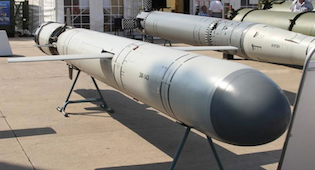
Russia’s current strategy calls for using layered defenses of long-range missiles capable of hitting targets some 1,000 nautical miles from Russian borders. The defenses are intended to counter U.S. Tomahawk long-range cruise missiles.
"Russia’s wartime naval strategy remains focused on nuclear deterrence and layered defense," the report says.
The centerpiece of the Russian navy remains its missile and attack submarine force, currently made up of 56 submarines. The current fleet includes 12 nuclear missile submarines, 26 cruise-missile equipped submarines, and 18 attack submarines.
A total of 31 major surface warships are currently deployed with most of the ships over 20 years old.
In July, Russian navy commander Adm. Viktor Chirkov announced that "the nuclear submarine fleet is the priority in the Navy shipbuilding program."
The Office of Naval Intelligence identified submarines as Moscow’s "capital ships," and noted that several new classes are being built and deployed. The newest submarine is what the report calls Dolgurukiy-class missile submarines, which are armed with SS-N-32 Bulava missiles with ranges of up to 5,281 miles. The first was launched in December 2013. Two others are nearing deployment and plans call for building eight submarines by 2020.
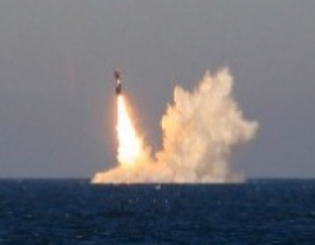
The new attack submarine is the nuclear-powered Severodvinsk, launched in 2010, with eight to be deployed by 2020.
Another class of attack submarine is in development and will be used to protect missile submarines.
Mark Schneider, a former Pentagon strategic nuclear policymaker, praised the Office of Naval Intelligence for producing the report.
"I’m glad that ONI is now looking at the Russian navy threat and publishing on it," Schneider said.
"My main criticism is the lack of attention to the Russian theater and tactical nuclear capability," he added. "Thirty years ago we had an in-kind deterrent against the Russian use of tactical nuclear weapons. This is now entirely gone. We have left ourselves vulnerable to devastating attacks by Russian nuclear forces against the navy."
High tech weapons include laser and other directed energy weapons designed to damage or disrupt electronics through radio frequency bursts.
"Russia’s long-term goal is a high-energy weapon with anti-satellite and cruise missile defense capability," the report said.
Moscow also is working on an electro-dynamic rail gun that uses electricity to fire a high-speed projectile with a muzzle velocity of 6,500 feet per second.
"The near- and mid-term combustion-based technologies are a transitional step to the creation of a railgun," ONI said.
The attack submarines are capable of firing advanced cruise missiles, including the new Kalibr missile that was recently fired by Russian warships in the Black Sea against targets in Syria.
"Russia plans to deploy Kalibr capability on all new … nuclear and non-nuclear submarines, corvettes, frigates, and larger surface ships," the report said.
"Kalibr provides even modest platforms, such as corvettes, with significant offensive capability and, with the use of the land attack missile, all platforms have a significant ability to hold distant fixed ground targets at risk using conventional warheads."
Plans call for adding the Kalibr to old Russian ships and submarines as part of the naval buildup.
Two diesel-electric submarines also are being produced, the Petersburg and Kilo submarines, and an advanced diesel electric submarine called "Kalina" is planned for 2020.
The surface warship build up includes a new guided-missile corvette and four new types of guided missile frigates. A new generation of guided missile destroyer also is planned, and a new class of aircraft carrier also is being developed.
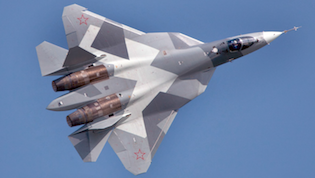
For the carrier, the report identifies the new advanced fighter jet known as the PAK-FA that is in the testing phase.
"The Russian Navy is being equipped with the newest [technology]; including precision long-range strike weapons, and has big nuclear power," Chirkov was quoted as saying in the report. "Naval forces today are capable of operating for a long time and with high combat readiness in operationally important areas of the global ocean."
The report mentions the deployment of a new ocean research ship, the Yantar, which was launched in August. U.S. intelligence spotted the ship conducting surveillance of U.S. missile submarine areas and underwater cables in the Atlantic in late August and early September.
The report makes no mention of the Russian autonomous underwater nuclear weapon, code-named "Kanyon," that was revealed on Russian television.
However, the report says Russia has developed advanced high-technology torpedoes, including wake-homing, high-speed "super-cavitating" devices, and a "super-heavyweight" torpedo.
"One of Russia’s newest torpedoes is the multi-purpose depth homing torpedo (UGST), which entered service in 2002," the report said. "The UGST has a monopropellant-fueled axial piston engine with pump jet propulsor. It is capable of acoustic, wire-guided, and wake-homing modes and is designed to be fired from both submarines and surface ships."
The torpedo can travel at speeds up to 50 knots with a detection range of up to 1.5 miles for submarines and a mile for surface ships.
